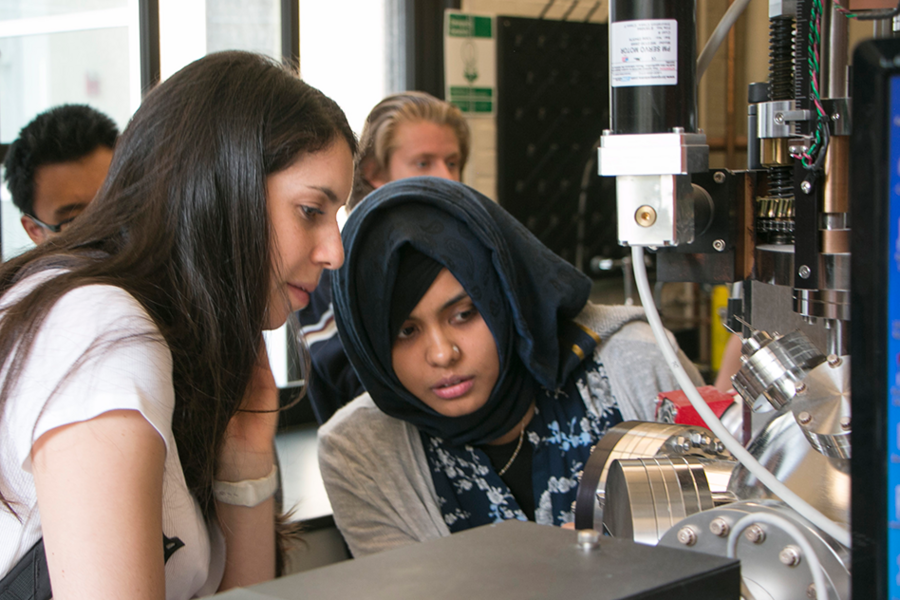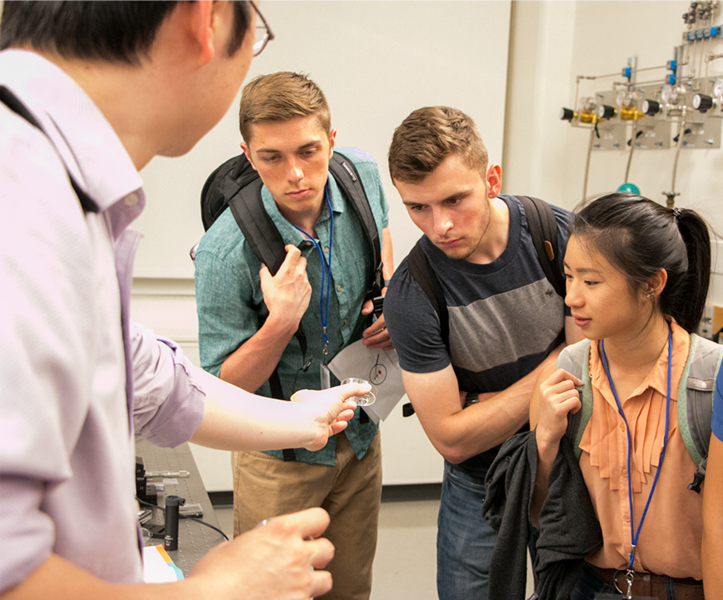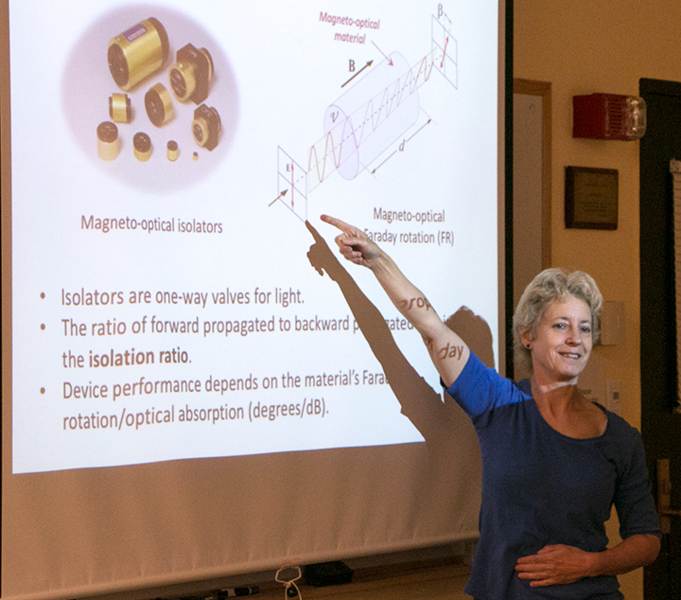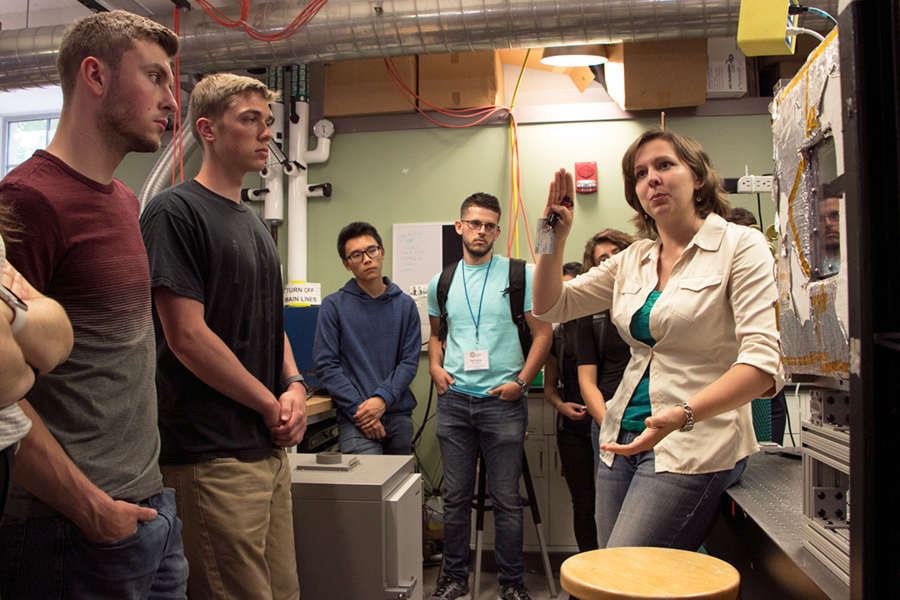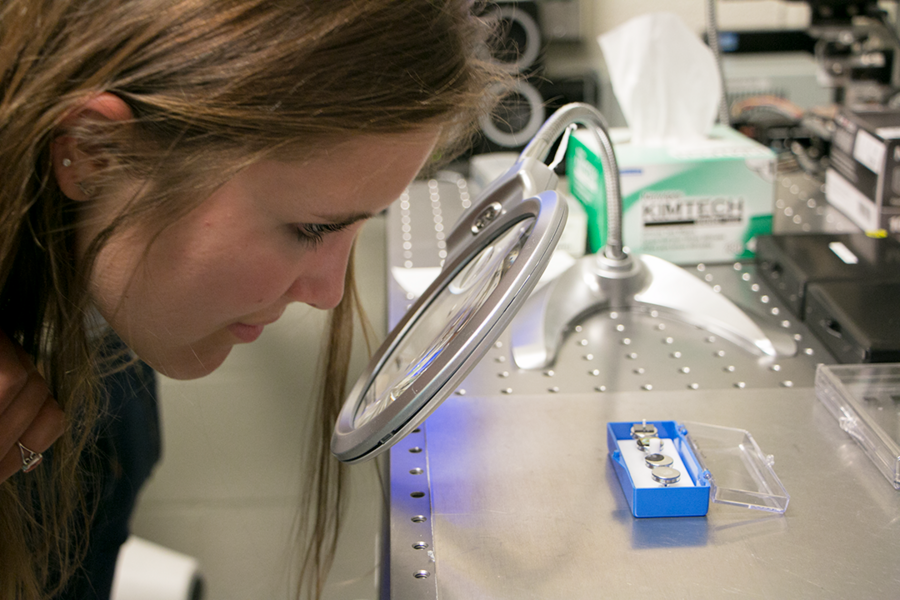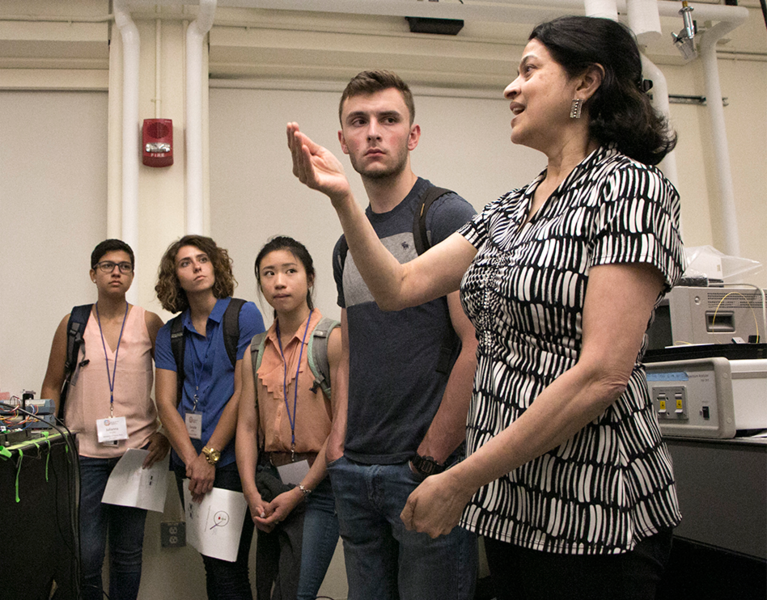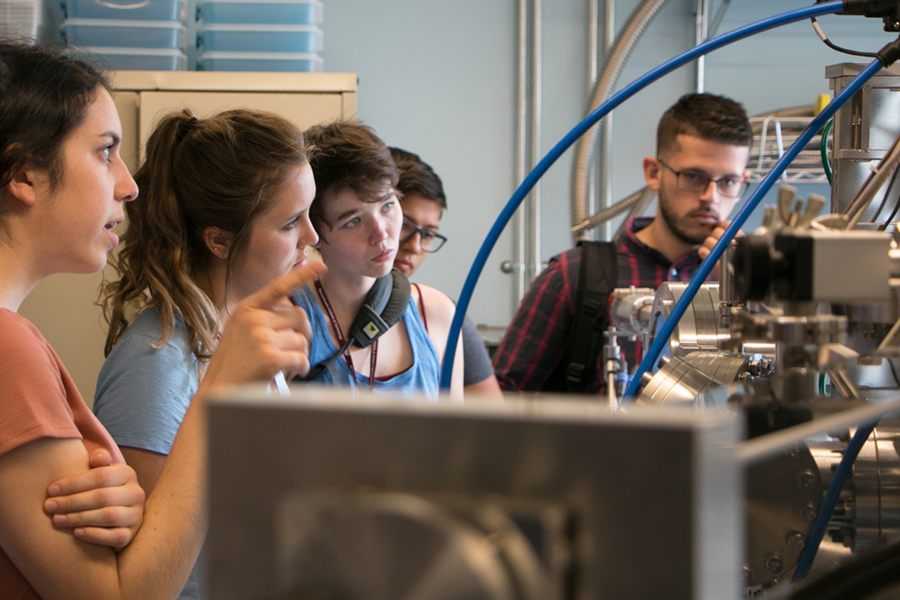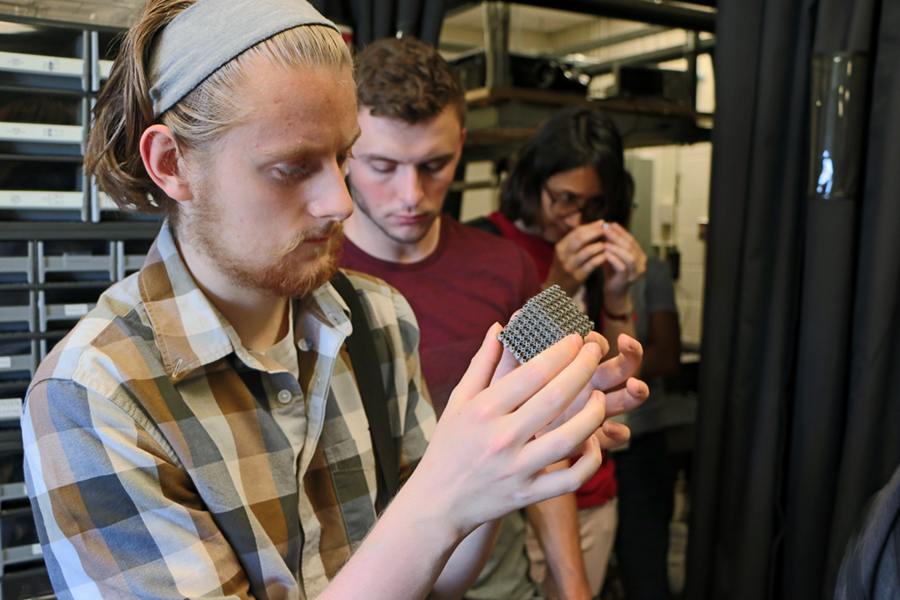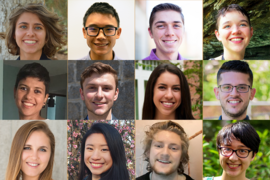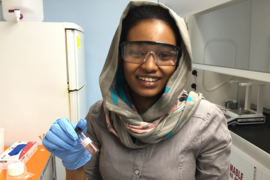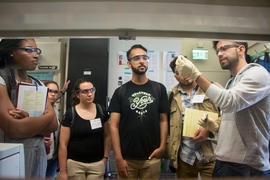From simulating the physics of spinning magnetic particles to fabricating new materials for infrared chemical sensing, MIT Materials Research Laboratory summer researchers will challenge themselves to learn new skills and develop new scientific insights.
A diverse group of top-performing undergraduates from across the U.S. and Puerto Rico as well as local community college students and teachers, these interns will spend the summer doing research in MIT faculty labs with support from the National Science Foundation’s Research Experience for Undergraduates (REU) and Research Experience for Teachers (RET) programs, the NSF CAREER award, the AIM Photonics Academy, and the MRL Collegium.
Community college students and teachers were assigned their lab placements, but the group of 12 Summer Scholars chose their lab placements after hearing presentations from 19 faculty members and touring their labs over three days. MIT professors and research scientists participating in the presentations come from the departments of materials science and engineering, mechanical engineering, civil and environmental engineering, electrical engineering and computer science, aeronautics and astronautics, biological engineering, chemical engineering, chemistry, and physics.
Associate professor of materials science and engineering Alfredo Alexander-Katz is leading a summer project that involves applying machine learning to the game-like motion of magnetic particles spinning in a neutral-particle medium and discovering how they form crystal shapes. “Programming is a great experience,” Alexander-Katz says. Oregon State University rising senior and physics major Ryan Tollefsen, who will work with Alexander-Katz, expressed his interest immediately after a lab tour. “I’ve been coding physics simulations in Python for the last year and a half,” Tollefsen says. “It’s definitely my favorite I’ve seen out of everything so far,” he says.
Sarai Patterson, a University of Utah materials science and engineering major, chose to work in the lab of ARCO Career Development Professor William A. Tisdale, where she’ll tackle a project to study halide perovskite nanocrystals for energy conversion. “I worked in a characterization lab for two years at school, but this is different types of characterization that I’ve never done before with the laser lab and optical properties. So I’m really excited about the characterization of these nanocrystals,” Patterson says.
Associate professor of materials science and engineering Juejun (JJ) Hu is developing new materials for nonlinear integrated photonics based on the chalcogen elements of silicon, selenium, and tellurium. These materials, known as chalcogenide glasses, can be used for infrared sensing and imaging. Alvin Chang, an Oregon State University biological engineering major, with a minor in entrepreneurship, says, “I was kind of drawn to that because I wanted to seek a project that was sort of related to my work at my home institution but also branching off. … I’ve worked with optics before, so I kind of know how it goes, but this is the first time I’ve heard about nonlinear photonics. So I thought that was a very interesting field to study.”
Bruce Quinn, from Roxbury Community College, will intern in assistant professor of materials science and engineering Rafael Jaramillo’s lab through the new Guided Academic Industry Network (GAIN) program, which is funded through Jamarillo’s National Science Foundation CAREER award. Jaramillo’s lab is developing new electronic materials from special compounds known as complex chalcogenides.
The summer researchers will present their results at a Poster Session on Wednesday, Aug. 8, 2018.
